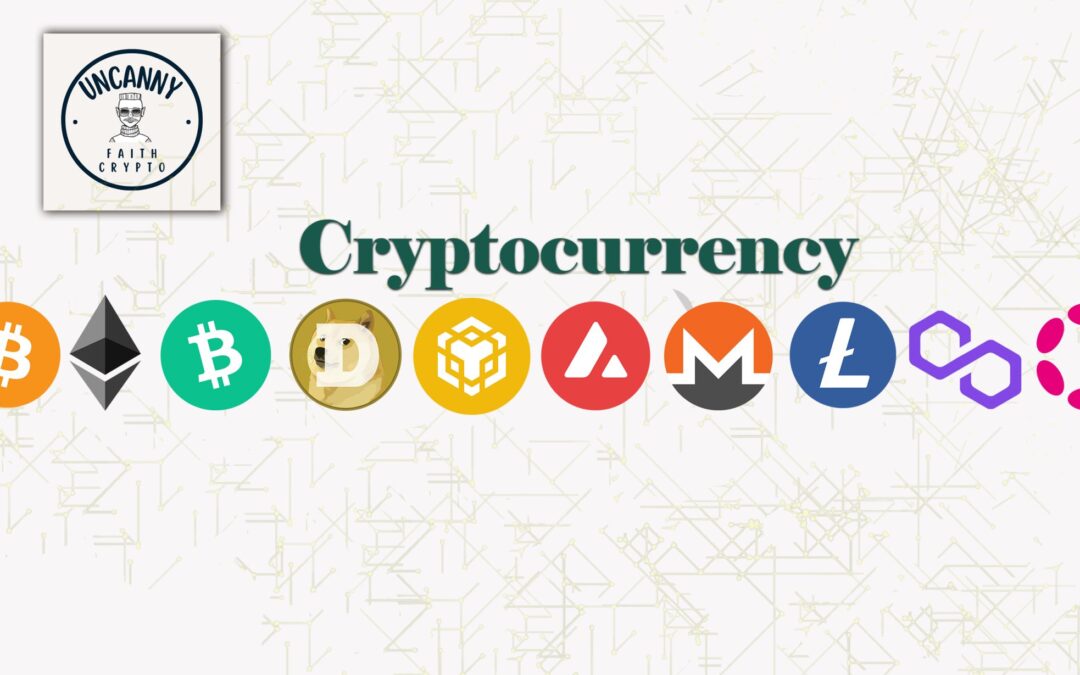Aleph.im in 2025: Key Trends Reshaping Decentralized Cloud Computing in Cryptocurrency
In an era where decentralised solutions are rapidly transforming industries, Aleph.im continues to shine as a pioneer in decentralised cloud computing, catering to the skyrocketing demands of blockchain and cryptocurrency projects. By 2025, Aleph.im will likely solidify its position as an irreplaceable infrastructure, finding itself at the crossroads of decentralised finance (DeFi), non-fungible tokens (NFTs), blockchain gaming, and beyond.
This article takes an in-depth look at the trends reshaping the Aleph.im ecosystem and its revolutionary impact on decentralised cloud computing. If you’ve ever wondered how the future of decentralised storage, computation, and development might look with Aleph.im, buckle up as we unpack actionable insights, key trends, and emerging opportunities for developers, blockchain enthusiasts, and businesses alike.
What Is Aleph.im? A Quick Recap
Before diving into the trends of 2025, understanding what Aleph.im offers is crucial. Aleph.im is a decentralised cloud computing network designed to enhance storage, computation, and cross-chain decentralisation within blockchain systems. By combining the strengths of decentralised networks with a simple and scalable infrastructure, Aleph.im creates tools that empower developers to build efficient apps without relying on centralised entities.
Key features include:
- Decentralised Storage: Secure, censorship-resistant file storage.
- Decentralised Compute: Scalable computation power spread across a decentralised network.
- Cross-Chain Compatibility: Seamlessly connects with major blockchains like Ethereum, Binance Smart Chain, Solana, and Ethereum Layer 2 solutions.
- Interoperability: Enables decentralised applications (dApps) to interact across multiple chains.
Why Does Aleph.im Matter in the Crypto Space?
In the current decentralised ecosystem, many blockchain projects depend on centralised storage services like AWS, Google Cloud, or Azure. These centralised systems, while convenient, present vulnerabilities such as censorship risks, high costs, regulatory scrutiny, and downtime. Aleph.im provides a decentralised alternative that helps projects achieve complete autonomy without sacrificing cost efficiency or user experience.
Trends Shaping Aleph.im in 2025
Let’s explore the forces driving Aleph.im’s evolution by 2025 and how it fits into the broader decentralised cloud computing narrative.
1. Increasing Demand for Decentralised Cloud Solutions
As Web3 continues to mature, more users and enterprises will want fully decentralised solutions for their apps and platforms. By 2025, decentralisation is no longer a “buzzword” but a critical requirement for ensuring scalability, transparency, privacy, and resilience. Aleph.im stands out as a leader in decentralised storage and computation services, offering a robust alternative to centralised giants.
There’s also a growing recognition that centralisation compromises the core ethos of blockchain. A scenario where blockchains rely on centralised storage solutions undermines the decentralised nature of the industry. Aleph.im—a solution with true decentralisation at its heart—offers the long-term resilience enterprises and developers are looking for.
2. Cross-Chain Interoperability Will Be Paramount
By 2025, we’ll see exponential growth in cross-chain dApps and ecosystems, driven by the increasing adoption of multi-chain systems. Blockchain platforms cannot afford to operate in silos anymore. Aleph.im’s compatibility with leading smart contract platforms, such as Ethereum, Solana, and Binance Smart Chain, makes it essential for creating unified experiences across multiple ecosystems.
Consider NFTs as a practical example: An interoperable NFT marketplace needs decentralised back-end storage infrastructure that doesn’t prioritise one chain over another. Aleph.im’s plug-and-play integrations for metadata and file storage significantly contribute to the seamless flow of information in such multi-chain environments.
3. DeFi and Blockchain Gaming Intensify Storage and Compute Requirements
In 2025, Decentralised Finance (DeFi) and blockchain games are expected to generate explosive growth in data and computation requirements. These applications require decentralised storage and real-time, scalable computation. Aleph.im enters the spotlight by offering the cloud infrastructure to keep up with these demands.
For blockchain games, where metadata, player progress, and assets must be handled securely and in real time, Aleph.im serves as a lifeline. Similarly, DeFi platforms, which process thousands of decentralised transactions per second, need Aleph.im’s ability to handle off-chain computations without compromising decentralisation guarantees.
4. Mainstream Enterprises Adopt Decentralised Solutions
Corporate adoption of blockchain technology is no longer speculative. By 2025, mainstream enterprises, fintech, and healthcare providers will start embracing decentralised cloud computing for increased reliability, security, and compliance. Aleph.im, with its immutability, end-to-end transparency, and frictionless interoperability, is well positioned to become a favourite among these big players.
For enterprises in heavily-regulated industries, the censorship-resistant, tamper-proof infrastructure Aleph.im provides can be a game-changer. Use cases range from secure file archival to customer data storage, ensuring businesses remain agile and compliant while decentralising operations.
5. Green Technology Matters More Than Ever
Sustainability will become a critical priority by 2025 as the blockchain industry faces mounting environmental scrutiny. Aleph.im has already made progress by leveraging lean operations through decentralised, scalable nodes. Its eco-friendly approach positions it as both innovative and essential in a market demanding carbon neutrality.
Aleph.im’s decentralised model inherently optimises energy consumption, avoiding the concentration of resources seen in centralised cloud providers with billion-dollar data centres. By promoting green initiatives, Aleph.im could further bolster its reputation as a future-ready solution.
6. AI Integration Creates Smarter Decentralised Applications
Artificial intelligence (AI) is set to intertwine with blockchain technologies as smarter dApps become the norm. Aleph.im enables developers to decentralise data feeding AI algorithms, thus ensuring privacy, enhanced security, and compliance.
For instance, decentralised AI-powered platforms could use Aleph.im for storing and processing sensitive consumer insights, all while ensuring no single entity has overarching control over data pipelines.
How to Get Started with Aleph.im
Are you excited about integrating Aleph.im into your project by 2025? Here are some actionable steps to help:
- Understand Your Requirements: Determine whether decentralised storage, computation, or both are essential for optimising your dApp or blockchain platform.
- Explore the Ecosystem: Familiarise yourself with Aleph.im’s documentation and tools. Their developer-friendly resources make onboarding straightforward.
- Leverage SDKs and APIs: Aleph.im offers a range of easy-to-integrate SDKs and APIs, ensuring fast development times.
- Join Developer Communities: Collaborate on active forums and communities to gain insights into using Aleph.im efficiently.
Frequently Asked Questions (FAQs)
1. What makes Aleph.im different from centralised cloud providers?
Unlike AWS or Google Cloud, Aleph.im offers decentralised, censorship-resistant, and privacy-centric storage and computation. Data stored or processed through Aleph.im is tamper-proof and highly scalable without relying on centralised entities.
2. How does Aleph.im ensure security?
By distributing data and computation across decentralised nodes, Aleph.im eliminates the single point of failure risks seen in centralised cloud infrastructure. Encrypted communication adds another layer of robust security.
3. Can Aleph.im accommodate enterprise-scale operations?
Absolutely! By 2025, Aleph.im is expected to handle enterprise-level storage and computation for industries like fintech, healthcare, and logistics, offering unparalleled scalability and performance.
4. Is using Aleph.im cost-effective?
Yes, developers and enterprises find Aleph.im’s decentralised infrastructure more cost-efficient than traditional cloud giants due to significantly optimised resource allocation and operational scalability.
Conclusion
By 2025, Aleph.im will likely become a cornerstone in the decentralised ecosystem, revolutionising how blockchain projects manage cloud storage and computation amid a growing demand for decentralised services. From enabling multi-chain interoperability to powering data-intensive applications like DeFi and gaming, Aleph.im is at the forefront of reshaping decentralised cloud computing in cryptocurrency.
As you prepare for 2025, consider how Aleph.im can complement your project’s needs, optimise performance, and align with the broader decentralised future. The adoption of this innovative protocol may well determine who thrives in the dynamic Web3 landscape.
Now is the time to explore Aleph.im and prepare for the decentralised revolution ahead. Are you ready to join this game-changing movement?

